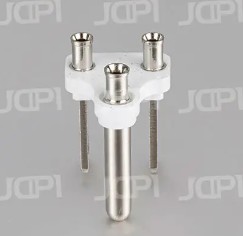UL (Underwriters Laboratories) plug inserts, like other electrical components, are designed and tested to meet specific environmental conditions to ensure safety and reliable performance. The suitability of UL plug inserts for particular environments depends on factors such as exposure to moisture, temperature extremes, and other challenging conditions. Here are considerations for the environmental conditions under which UL plug inserts can be used:
-
Indoor Use:
- UL plug inserts are typically suitable for indoor use in controlled environments where exposure to moisture, extreme temperatures, and other harsh conditions is minimal. Standard indoor conditions include typical room temperatures and normal humidity levels.
-
Dry Locations:
- UL plug inserts are intended for use in dry locations where there is no direct exposure to liquids. Moisture can pose a risk of electrical shock and damage to the components, so avoiding wet or damp areas is essential.

- UL plug inserts are intended for use in dry locations where there is no direct exposure to liquids. Moisture can pose a risk of electrical shock and damage to the components, so avoiding wet or damp areas is essential.
-
Controlled Temperature Ranges:
- Most UL plug inserts are designed to operate within specific temperature ranges. It's important to follow the manufacturer's specifications regarding temperature limits. Extreme heat or cold can affect the performance and safety of plug inserts.
-
Low Humidity Environments:
- While UL plug inserts are generally designed to withstand normal humidity levels, prolonged exposure to high humidity or wet conditions can lead to corrosion and compromise electrical safety. In environments with elevated humidity, extra precautions may be necessary.
-
Protected Outdoor Use:
- Some UL plug inserts may be suitable for use in protected outdoor locations where they are shielded from direct exposure to rain, snow, or sunlight. However, it's essential to check the product specifications and markings to ensure compatibility with outdoor use.
-
Chemical Exposure:
- Avoid exposing UL plug inserts to corrosive chemicals or solvents, as these substances can degrade the materials and compromise the electrical insulation. If the environment involves exposure to chemicals, it's crucial to use plug inserts specifically designed for such conditions.
-
UV Exposure:
- Direct exposure to ultraviolet (UV) radiation from sunlight can impact the materials used in plug inserts, potentially causing degradation over time. If outdoor use is required, choose plug inserts designed to resist UV damage.
-
Clean Environments:
- In environments where cleanliness is crucial, such as laboratories or medical facilities, UL plug inserts should be selected based on their resistance to dust and debris. Some plug inserts may have additional features, such as dust covers, to protect the contacts.
-
Hazardous Locations:
- For installations in hazardous locations where there may be a risk of flammable gases, vapors, or dust, it's essential to use UL plug inserts specifically rated for such environments. Specialized certifications, such as Class I, Division 2, may be required for hazardous locations.
-
Vibration and Mechanical Stress:
- Consider the level of mechanical stress and vibration in the environment. For applications with high vibration or mechanical impact, select plug inserts designed to withstand such conditions to ensure long-term reliability.
Always refer to the manufacturer's documentation and specifications for detailed information on the environmental conditions for which a specific UL plug insert is designed. By selecting the appropriate plug inserts for the intended environment, users can ensure safety, reliability, and compliance with relevant standards.



 English
English Deutsch
Deutsch













